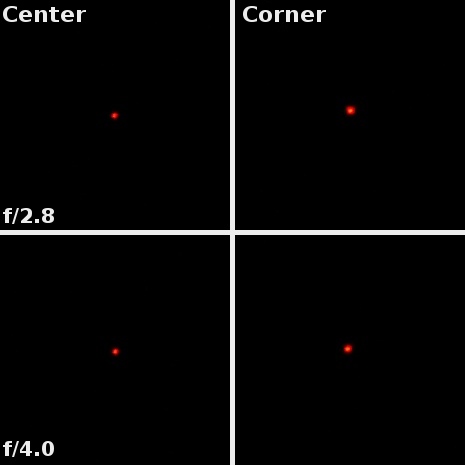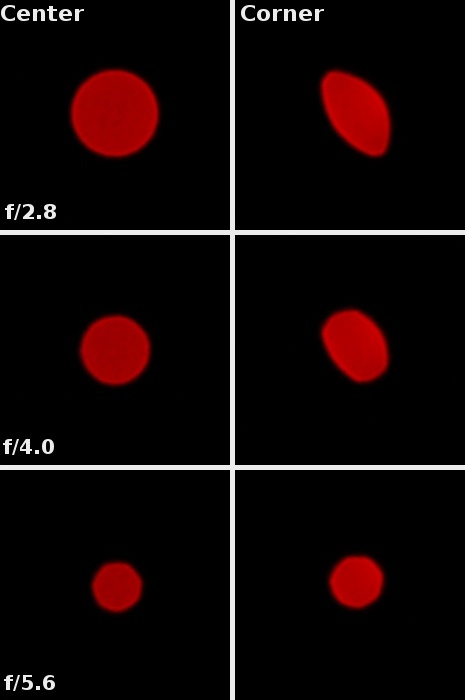Nikon Nikkor AF-S DX Micro 40 mm f/2.8G
7. Coma, astigmatism and bokeh

When it comes to astigmatism the situation is worse. The average difference between vertical and horizontal MTF50 function values amounted to 11% which is a medium result. Such a result is far from high or very high but the lateral play of the inner tube and the front element system we mentioned previously doesn’t bode well for the future.
Please Support UsIf you enjoy our reviews and articles, and you want us to continue our work please, support our website by donating through PayPal. The funds are going to be used for paying our editorial team, renting servers, and equipping our testing studio; only that way we will be able to continue providing you interesting content for free. |
- - - - - - - - - - - - - - - - - - - - - - - - - - - - - - - - - - - - - - - - - - - - - - - -
The photos below show defocused diode point-like images taken from the frame centre and from the corner as well. Looking at them you can try to say something about the degree of spherical aberration correction, the circularity of the aperture, used here, and also how the lens renders fuzzy images.







